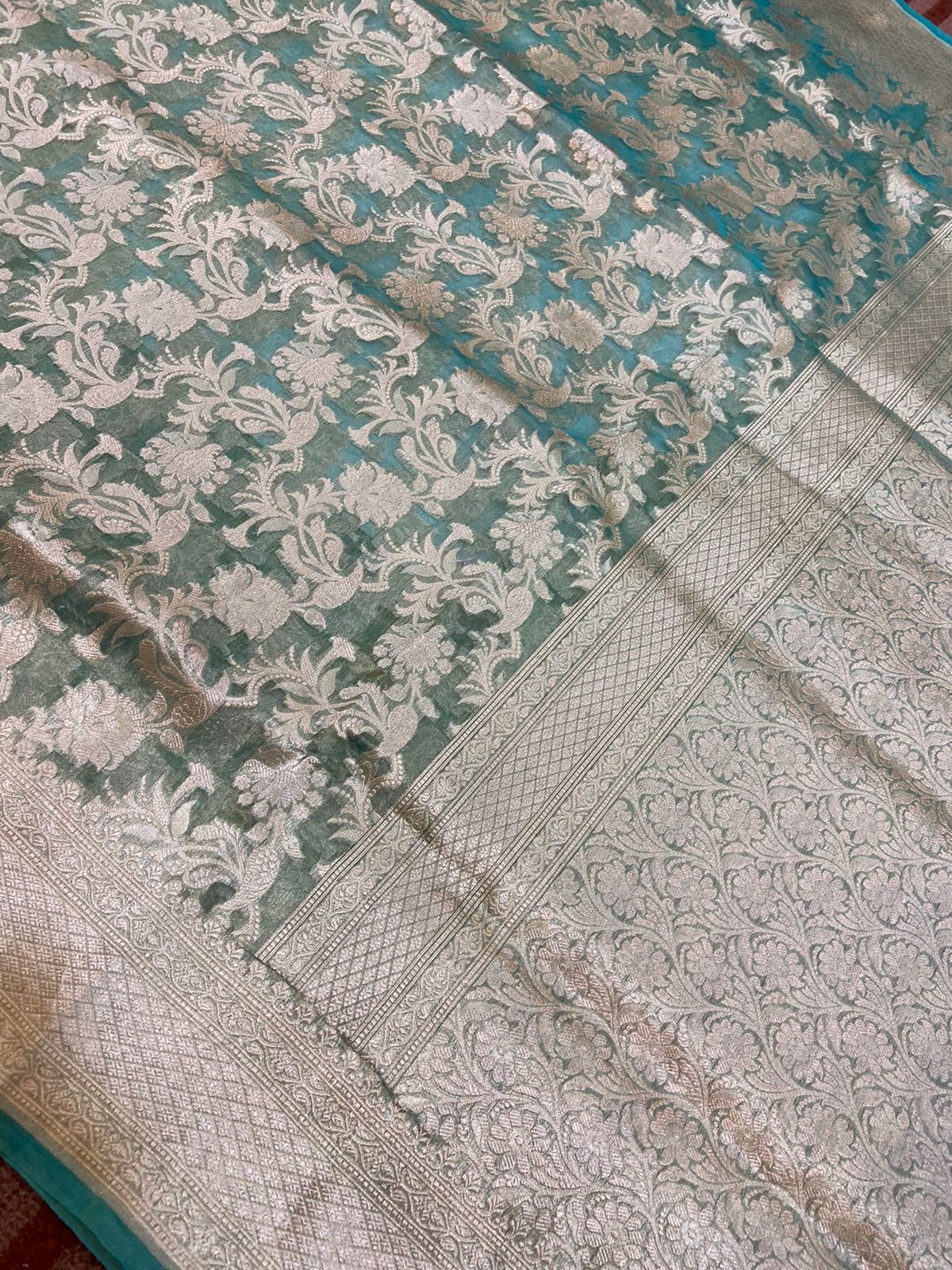The Reminiscent Journey Of Banarasi Fabric To A Saree
February 28, 2023From Banarasi Fabric To A Six-Yard Long Saree: The Reminiscent Journey
India's finest artwork and rich heritage are represented by the opulent and traditional Banarasi saree. It honours the enchanted creation of six-yard draperies that are exquisite in their refinement and exceptional quality using pure silver and gold thread and silk.
The exquisitely detailed Banarasi saree is a labour-intensive, months-long work of an artisan. As we comprehend the various processes that went into making this saree, we can more fully appreciate its beauty. Let’s continue.
The reminiscent journey of Banarasi sarees
Without mentioning the region of its origin, a story about Banarasi silk cannot be finished. These traditional silk sarees from Uttar Pradesh, a state in northern India, are prized for their distinctive weave, texture, and pattern. The Banarasi Saree is without a doubt the crown jewel of all traditional sarees, despite being one of the most expensive in all of India.
The Banarasi saree has its roots in the Mughal era, most specifically in the reign of Emperor Akbar. He encouraged the extravagant use of gold and silver zari in the best silk embroidery, and soon rich silk brocade sarees with exquisite needlework came to be recognised as the craftsmanship of Banaras.
Throughout the 17th century AD, Banarasi fabrics were exported to all corners of the globe. The weaving of brocade flourished significantly more in the centuries that followed, and Banarasi saree production is still a well-known industry in modern India.
In the past, Banaras was a centre for the production of fine handloom textiles. The history of Indian culture has a long tradition of Banarasi Sarees and garments. The creation of Banarasi silk sarees as we know them now had a significant impact of centuries and ages of skill and knowledge that had been developed over time and handed down through the generations.
The once-vibrant society of Bunkaars, or weavers, is currently on the verge of extinction. The craftsmanship of the weavers is no longer valued because of the introduction of power looms, however, no one can deny the fact that the fineness of a handloom Banarasi saree can’t be matched with that made on a power loom.
The intricate process of weaving a banarasi saree

A selection of silk yarns for the fabric and metallic threads for the zari mark the beginning of each Banarasi saree's journey. High-quality silk serves as the fabric's foundation, while zari threads are made from pure gold and silver alloys. Weaving comes next after the yarn is ready.
This Banarasi saree is still woven by hand in Varanasi using elaborate designs made of gold and silver threads, despite advancements in technology. Pit looms are used by weavers in a conventional way to weave these beautiful delicacies. The warp and weft threads are set up on the handloom to weave the saree. Artists first sketch out the motifs and patterns, which are then converted to punch cards, or "Naksha Patta." To imprint the design on the fabric, these are employed in handlooms.
The Banarasi saree continues to remain the wedding dress of choice for modest brides, despite lehenga-cholis becoming increasingly popular among young and modern women.
The six yards of the Banarasi saree are beautifully decorated with several sophisticated and intricate motifs. Every woman's first choice for sarees now is one of these stunning and sophisticated garments. Women all across the world have come to love their stylish and exotic weavings by designers who use zari, patterns, and emeralds.
[Read About Why Rich Banarasi Saree Waves Popular Among New-age Women]
Popular styles of banarasi sarees
These timeless pieces of art can be found in a variety of types. Some of the popular ones include:
Katan silk banarasi sarees
Generally, banarasi sarees are made using katan silk. It is painstakingly woven with a silk weft and warp only. Silk is an extremely soft, lustrous, and delicate fabric. Sarees made of katan banarasi silk are classic.
Khaddi Georgette banarasi sarees
Khaddi Georgette Khaddi silk, which is often composed of silk, has a sheer, delicate feel. It is slightly thicker and more opaque than chiffon. Its texture is thin, frequently crepe-yarn and developing woven silk. The twisted crepe filaments from which it is made give it its springy quality.
Tanchoi silk banarasi sarees
In banarasi sarees, the exceedingly fine tanchoi weave makes use of an extra weft string to produce delicate samples. Tanchoi weaving, which makes use of a few twists and two to five weft colours, is one of the most intricate and sophisticated weaving techniques. Amazingly lightweight and delicate to wrap, these sarees are.
Banarasi brocade
These sarees are renowned for their lavish and regal appearance and are constructed from a thick, heavy cloth with elaborate gold or silver embroidery work. This fabric is renowned for its lavish, intricate patterns and decorations and is manufactured from silk or other premium fibres.
When it comes to elegance and sophistication, brocade Banarasi sarees are frequently worn at major events like engagements weddings, and religious festivals. These sarees are prized for their outstanding artistry and materials, making them some of the priciest and most sought-after Banarasi saree variants.
[Read about Chiffon Banarasi Saree For Party Stylish Makeover Ideas]
Final thoughts
Banarasi sarees hold a special place in our hearts and draw a lot of attention as they are the most gorgeous and elegant type of Indian clothing. Every woman dreams of donning such exquisite clothing that emanates a majestic aura and makes her feel like a queen.
Explore Anvisha's - Banarasi Saree Manufacturer in Varanasi wide selection of banarasi sarees, which are perfect for weddings, celebrations, family events, and more. They are available in a variety of opulent fabrics and brilliant colour ranges. Find what you're looking for right away!






 Call Us Now
Call Us Now
Comments For This Post